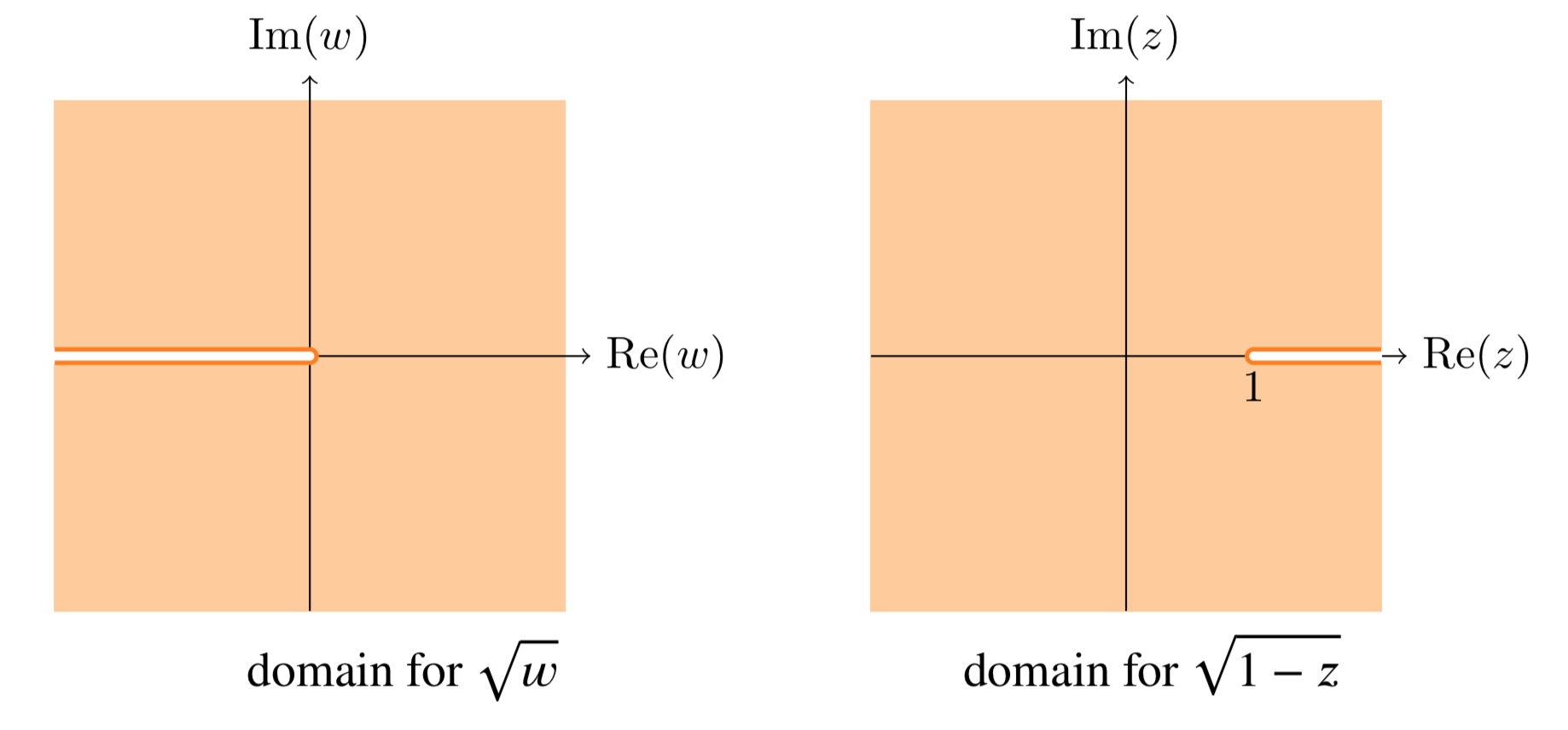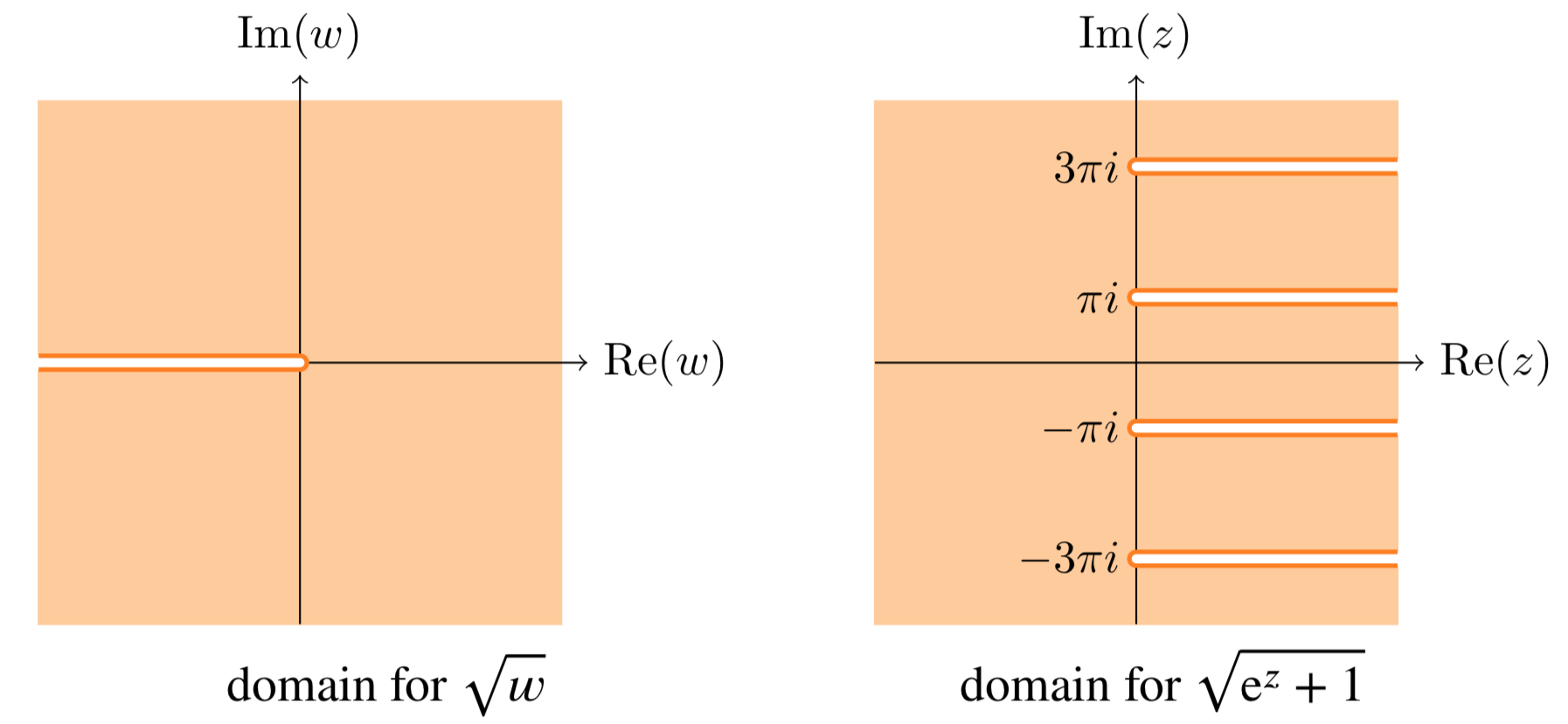2.9: Branch Cuts and Function Composition
( \newcommand{\kernel}{\mathrm{null}\,}\)
We often compose functions, i.e. f(g(z)). In general in this case we have the chain rule to compute the derivative. However we need to specify the domain for z where the function is analytic. And when branches and branch cuts are involved we need to take care.
Let f(z)=ez2. Since ez and z2 are both entire functions, so is f(z)=ez2. The chain rule gives us
f′(z)=ez2(2z).
Let f(z)=ez and g(z)=1/z. f(z) is entire and g(z) is analytic everywhere but 0. So f(g(z)) is analytic except at 0 and
C - { 2πni, where n is any integer }
The quotient rule gives h′(z)=−ez/(ez−1)2. A little more formally: h(z)=f(g(z)). where f(w)=1/w and w=g(z)=ez−1. We know that g(z) is entire and f(w) is analytic everywhere except w=0. Therefore, f(g(z)) is analytic everywhere except where g(z)=0.
It can happen that the derivative has a larger domain where it is analytic than the original function. The main example is f(z)=log(z). This is analytic on C minus a branch cut. However
ddzlog(z)=1z
is analytic on C - {0}. The converse can’t happen.
Define a region where √1−z is analytic.
Solution
Choosing the principal branch of argument, we have √w is analytic on
C−{x≤0,y=0}, (see figure below.).
So √1−z is analytic except where w=1−z is on the branch cut, i.e. where w=1−z is real and ≤0. It's easy to see that
w=1−z is real and ≤0 ⇔ z is real and ≥1.
So √1−z is analytic on the region (see figure below)
C−{x≥1,y=0}
A different branch choice for √w would lead to a different region where √1−z is analytic.
The figure below shows the domains with branch cuts for this example.

Define a region where f(z)=√1+ez is analytic.
Solution
Again, let's take √w to be analytic on the region
C−{x≤0,y=0}
So, f(z) is analytic except where 1+ez is real and ≤0. That is, except where ez is real and ≤−1. Now, ez=exeiy is real only when y is a multiple of π. It is negative only when y is an odd mutltiple of π. It has magnitude greater than 1 only when x>0. Therefore f(z) is analytic on the region
C−{x≥0,y=odd multiple of π}
The figure below shows the domains with branch cuts for this example.



